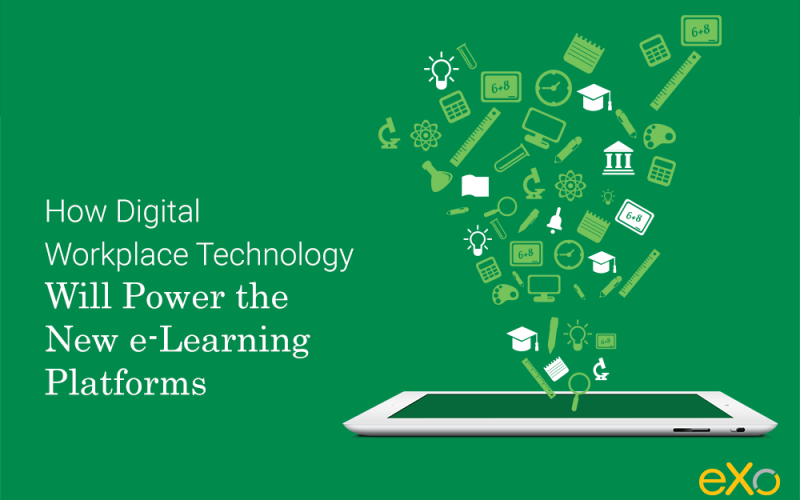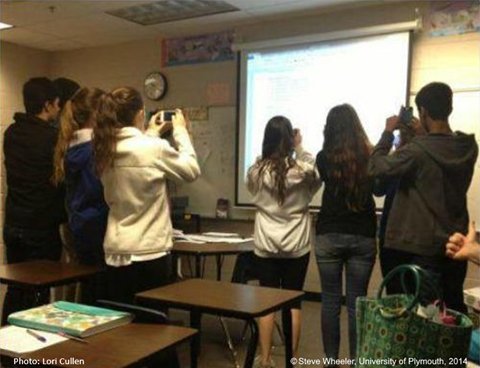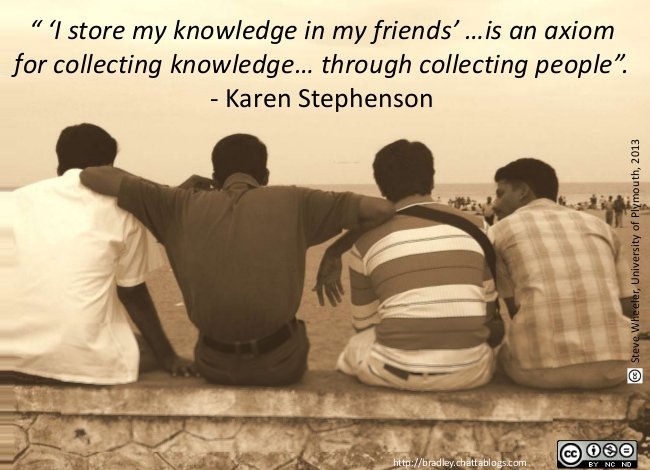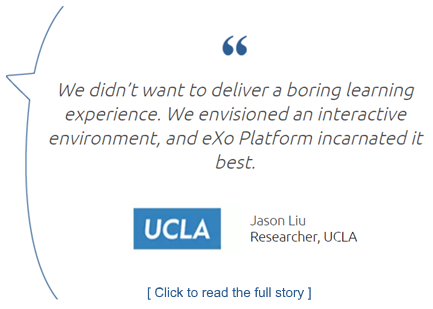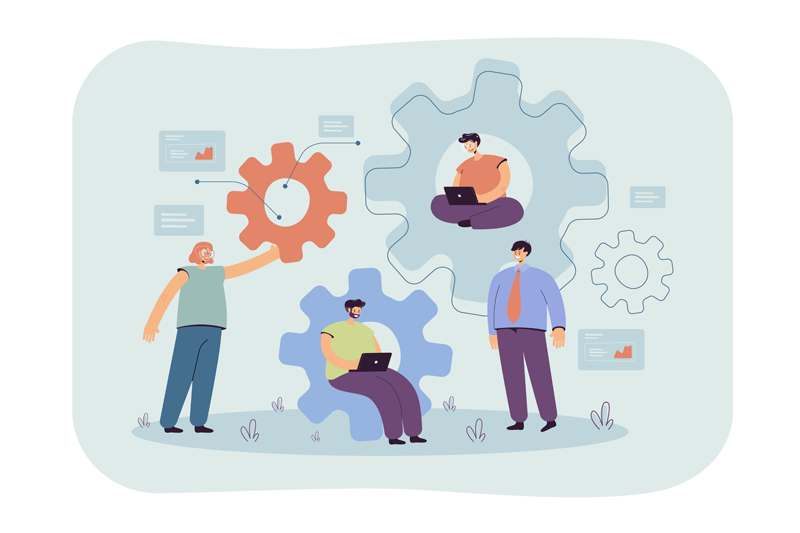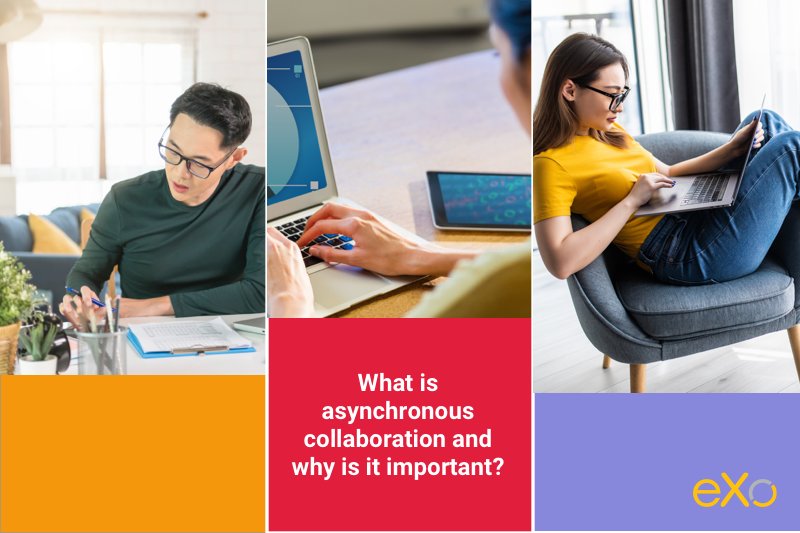“The future is already here – it’s just not very evenly distributed”, said William Gibson. This technology has the ability to create bridges between teachers, researchers, students, alumni, existing e-learning tools, and the rest of the academic ecosystem. In other words, it is Learning 2.0.
On the other hand, we have disruptive new technology appearing in the horizon that–if we were to make predictions about a less immediate future–will grow and enhance the Learning 2.0 experience, perhaps even leading to a third generation of digital learning.
With that said, let us start by looking at a few ways that a new streamlined digital learning platform can enhance the student experience. We will do this by looking at the four tenets of how students learn and share some examples of how existing and emerging workplace technology is going to enhance them.
For example, when attending classes or lectures. But what is more broadly meant here is learning through passive information intake, be it reading, listening or watching.
Digital learning solutions break the barriers between students and information. They optimize search and findability of resources and course material from different relevant sources through one access point.
They also reduce format restrictions and make content previewable in one place, be it text, presentations or multimedia such as recordings of lectures.
Real-time collaboration tools, including video conferencing technology integration, also make it easy for students to capture information live, be it when attending live courses, communicating with an expert in their network or with other students.
All of this can be made accessible from anywhere, using any device.
Further down the road, we may also see newer technology being integrated in digital learning platforms to take access and consumption of information to a new level. Examples of this would be artificial intelligence and machine learning and how they may create a more tailored search experience, more intelligent automatic suggestion of information and helping the student with network building and knowledge discovery within the university and its ecosystem.
We may even see new ways to visualize learning material or interactive live feeds through Virtual Reality technology.
In other words, learning by practicing the information that was consumed. This may typically just be done through good old exercises and test material taken formally, or informally, individually or within collaborative workgroups.
Or better yet (and as is the case with highly interoperable platforms today where the question is often not so much “how?” or “if?” anymore): what would be an integration that would bring value to students and teachers using the platform and the LMS at the same time?
The answer may well vary from one academic organization to another. One straightforward example we can imagine is having a section of the digital learning platform’s homepage display relevant information coming from the LMS to students and teachers depending on user role.
Examples of this are learning by undertaking activities that require building something, or learning by creating new content material.
It is not difficult to realize how this category of learning can be empowered through virtual project spaces, sub-communities and interest groups where students can work together on their projects.
A digital learning environment should also allow them to solicit new project members, relevant expertise or advice from other people from an university-wide pool of skills with potentially related and searchable interests.
In terms of content creation, this digital environment should also enable crowdsourcing of information by making it easy to create and contribute new content, to organize and structure it well, to keep it up reusable for others interested in the same topic and make it easy to update and enrich.
Looking further down the road where a potential Learning 3.0 experience is emerging, the Internet of Things and 3D printing spring to mind.
Since at a technical level, in order to be able to potentially connect a digital learning platform to a whole world of external devices, it’s important that such a platform would be based on known interoperability standards so that connectors can be freely created for these devices and their drivers. As a result, we believe that open source platform technology that respects standards and embraces interoperability beyond commercial proprietary and tech vendor ecosystem restrictions stands a better chance of accommodating this evolution in digital learning environments.
This fourth category is at the heart of what we call social learning (which also somewhat overlaps with the previous categories). We are social creatures, socializing the learning experience is bound to improve it.
For instance, a student who shares what was understood, practiced or created with people beyond just the teacher is likely to receive interaction and feedback that will contribute positively to the learning experience.
There are knowledge management implications to this as well. What specifically comes to mind here is the notion of “I store my knowledge in my friends”, i.e. the notion of building collective knowledge, or distributed knowledge, through connectivism.
The next-generation academic digital platform is a unified and streamlined one. It is not only about students and learning but also about staff, improving the way they interact with their university, its processes, knowledge base, and the way they connect and collaborate with each other. (Even though improving staff satisfaction and efficiency does, at the end of the day, improve the student experience and competitiveness of the institution.)
This transfers well to the academic world where a university staff and/or student platform can for example be used to interface with companies in order to provide students with internship and placement opportunities.
In a nutshell, academic institutions today are really starting to face the growing expectations for evolution and digital transformation in order to stay relevant and offer an excellent learning environment to their newer generations of students, alumni and staff members.
Just these past few months we, as a tech provider, have seen a remarkable increase in the number of such organizations that approach us to learn more about how they can use our technology to meet these challenges. We believe this to be a normal thing because we see that today’s thriving digital collaboration technology niche is well equipped to take on these new challenges facing the academic field.
We also find that, through their fast-paced growth and openness, they have the most promise and potential for meeting upcoming digital learning challenges and technological evolution.
